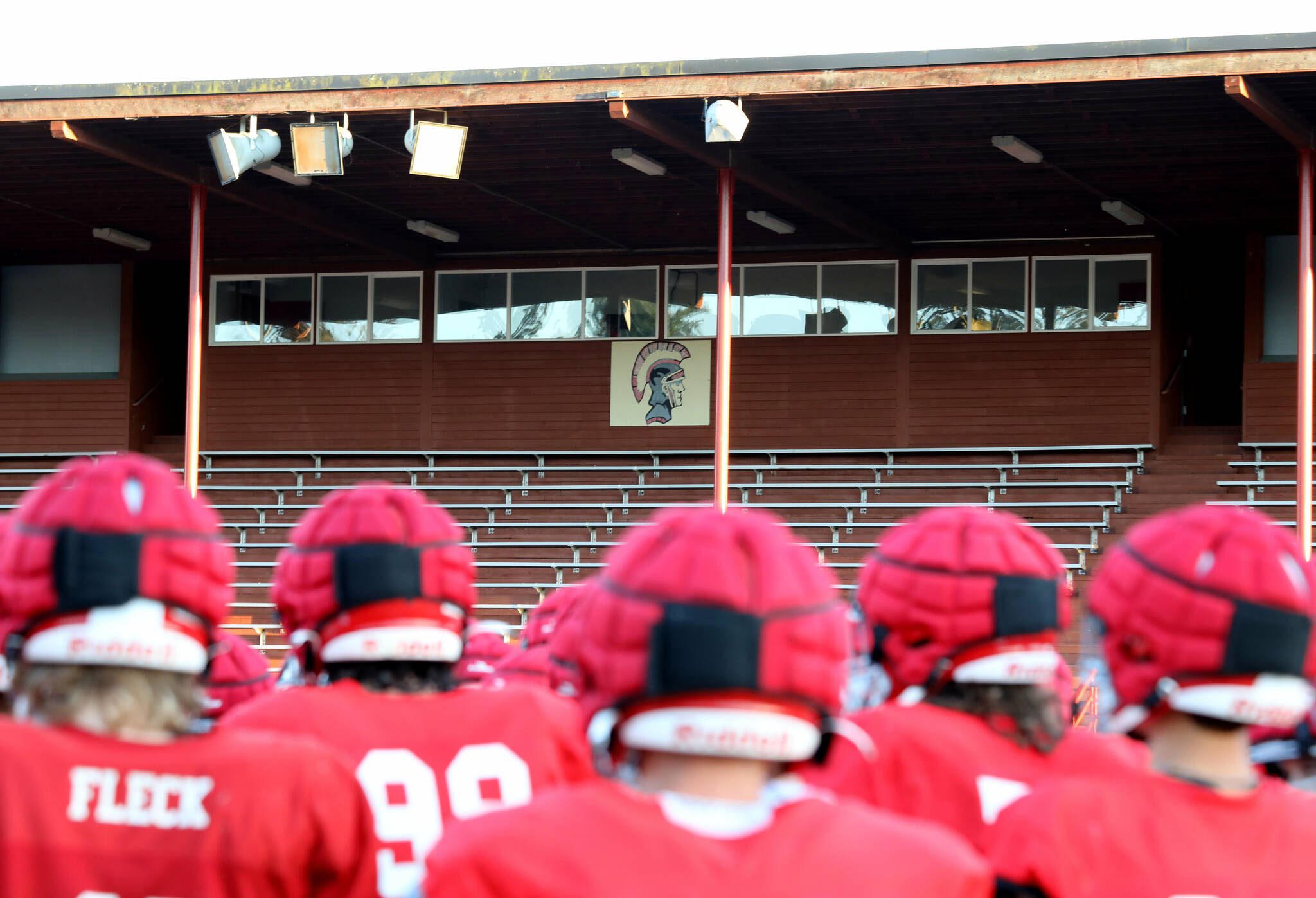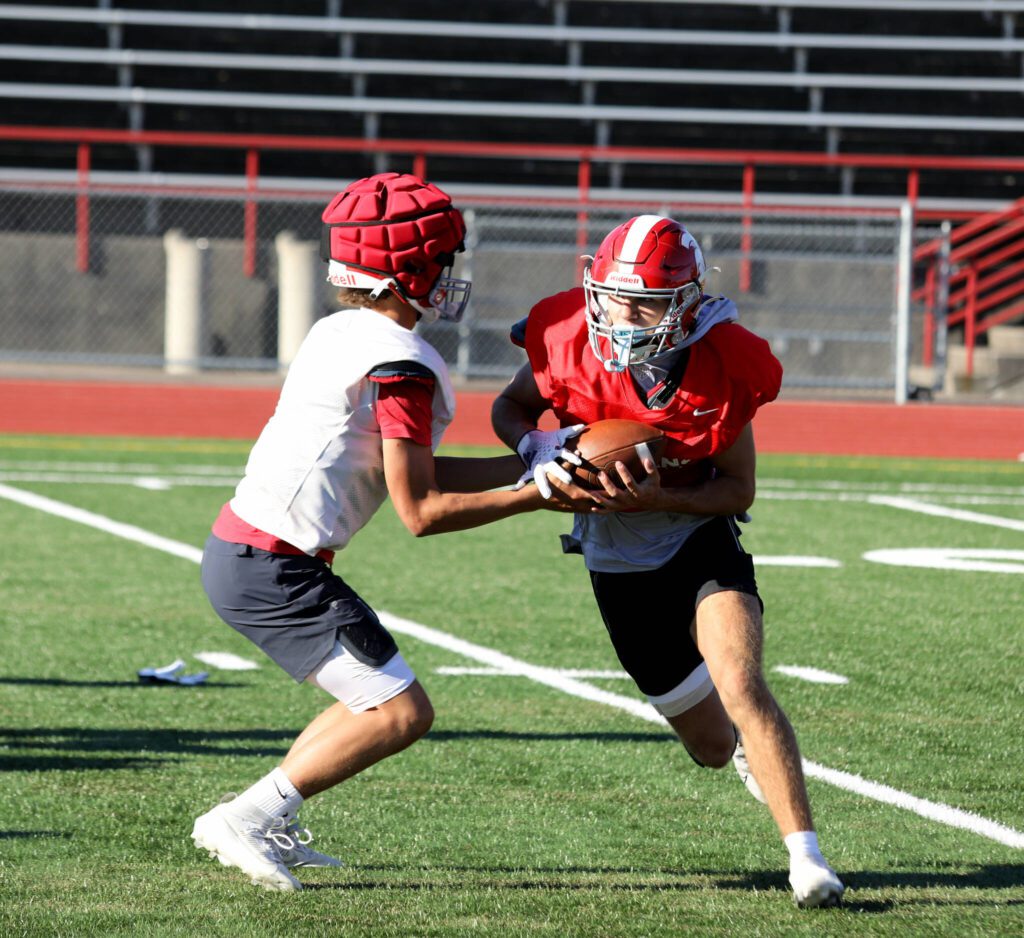The Washington Interscholastic Activities Association (WIAA) named Guardian Sports its Official Football Safety Partner in a press release on Sept. 19.
Guardian Sports is known for its padded football, hockey and lacrosse helmet caps, in addition to other equipment and products used for athletic activities.
“We’re excited to expand our focus on student-athlete safety with this partnership with Guardian Sports,” said WIAA Executive Director Mick Hoffman. “All students need a safe place to play.”
Guardian Sports, which started in 2011, created the Guardian Caps in 2010. And for nearly the past 15 years, the company’s mission has been to “bridge the gap between the products that athletes deserve (and) need and what is currently available on the market.”
“The purpose of the Cap is to reduce the force of impact upon collision experienced by players and to prove that soft-shell helmet technology is superior to that of a hard shell,” according to the company’s website, which also states that more than 500,000 youth, high school and college athletes nationwide use its equipment. “This project stems from our passion for player safety, foundation in material sciences and the generally accepted physics behind impact reduction.”
The Caps were in action at the Stanwood High School football practice on Aug. 30, and other Snohomish County teams have implemented them.
“Guardian Caps are permitted for usage in games and practices throughout the season, per the NFHS’ (National Federation of State High School Associations) playing rules,” according to the press release. “The WIAA encourages schools and school districts to consult with their risk managers to determine usage, as the Association does not have additional policies regarding usage.”
Going national
The National Football League (NFL) became involved with the helmet equipment in 2017 when Guardian Sports won the NFL HeadHealthTECH challenge, which were “series of innovation challenges intended to deepen understanding of and advance solutions in the areas of head protection, materials science and kinematic measurement,” according to NFL.com.
The Jacksonville Jaguars were the first team to use the Caps during practices in 2020. NFL owners in 2022 voted to mandate the Caps through the second preseason game, specifically for offensive line, defensive line, linebacker and tight end players, since those positions received frequent head contacts. The NFL expanded its mandate in 2023 to include the use of the gear not just in preseason but also regular and postseason practices, and running backs and full backs were also added to the list of positions that were required to wear the Caps during contact training.
In April 2024, the NFL modified its mandate again to add wide receivers, cornerbacks and safeties to the list of susceptible head-contact positions. The NFL allowed players to wear the gear during games for the 2024-25 season.
“Based on testing conducted by NFL-NFLPA engineers,” according to a May 2022 tweet from the NFL, “(the) addition of Guardian Caps represents a 20% reduction in head impact severity if two players are wearing them (compared to a 10% impact reduction if one player is wearing the Cap).
Caps help reduce impact but are not 100% concussion-free
Under the Guardian Sports website’s FAQ section, this was the response to the hypothetical about Caps reducing concussions.
“No helmet, practice apparatus or helmet pad can prevent or eliminate the risk of concussions or other serious head injuries while playing sports,” the answer states. “Researchers have not reached an agreement on how the results of impact absorption tests relate to concussions. No conclusions about a reduction of risk or severity of concussive injury should be drawn from impact absorption tests. Guardian has always stood by the fact that Guardian Caps reduce the impact of hits and that its use should be one piece of the puzzle to an overall safety strategy. … The league reported a 52% reduction in concussions for those positions during the mandated period versus the previous three-year average.”
The Guardian Sports website lists that Stanford University did a study on the Caps with their football team and found “an average reduction of 10-25% of HARM – head acceleration response metric.”
Those percentages come from “Padded Helmet Shell Covers in American Football: A Comprehensive Laboratory Evaluation with Preliminary On-Field Findings,” the study published in the Annals of Biomedical Engineering journal in March 2023. Some of the authors listed were within the university’s bioengineering, biomedical, neurosurgery, neurology, radiology and mechanical engineering departments.
The research evaluating the effect of the Caps was done in a laboratory with impact tests on mannequins and then an on-field experiment with the university’s football team. Players were equipped with MiG2.0 mouthguards in 2019 without the padded-helmet caps and again in 2021 with the caps.
In their overall findings of evaluating collegiate linebackers during practice sessions, the authors wrote, “The addition of the padded-helmet shell cover was effective in attenuating the magnitude of angular head accelerations and two brain injury risk metrics (DAMAGE, HARM) across most laboratory impact conditions but did not significantly attenuate linear head accelerations for all helmets. … On the field, no significant differences in any measure of head impact magnitude were observed between the bare helmet impacts and padded helmet impacts.”
The authors also wrote more research was necessary to examine the effect of padded-helmet covers in a real-time environment, such as in an official game, for example, and also in different age groups.
Talk to us
> Give us your news tips.
> Send us a letter to the editor.
> More Herald contact information.


























